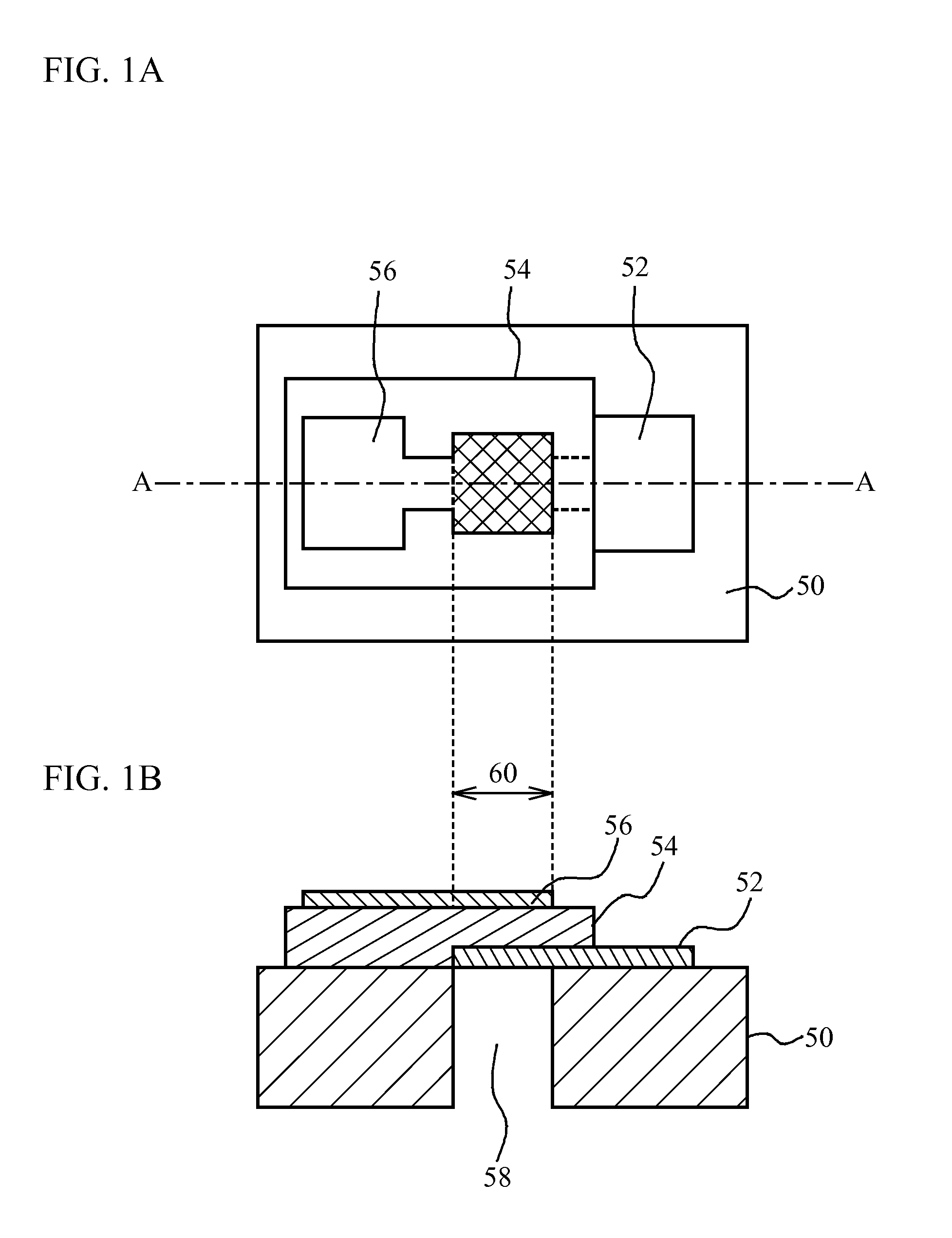Acoustic wave device
a technology of acoustic waves and filters, applied in the field of acoustic waves devices, can solve the problems of reducing the acoustic impedance of increasing the loss resulting from the decoupler film itself, and not being able to convert unbalanced signals to balanced signals and the revers
- Summary
- Abstract
- Description
- Claims
- Application Information
AI Technical Summary
Benefits of technology
Problems solved by technology
Method used
Image
Examples
embodiment 1
[0049]An embodiment 1 improves the piezoelectric constant of a piezoelectric film. First, a description will be given of the significance of improving the piezoelectric constant of the piezoelectric film. A structure of each film used in simulation is the same as one of the comparative example 1. The decoupler film 30 is a silicon oxide film and has an acoustic impedance of 12.7 Mrayl.
[0050]FIG. 10A is a graph of an impedance vs. frequency characteristic of the comparative example 1 in which the decoupler film 30 is a silicon oxide film. The spacing between the two modes is set to the spacing Δf between resonance frequencies. FIG. 10B is a graph of the resonance frequency spacing ratio ((fsr−far) / (fsr+far)×2×100) associated with variations of the dielectric constant (white circle), the elastic constant (black circle), and the piezoelectric constant (white triangle) of the piezoelectric films 14 and 24. The variations are values normalized by using, as reference values, the standard ...
embodiment 2
[0064]An embodiment 2 has an exemplary structure in which the electrodes have different film thicknesses. FIG. 15 illustrates a structure of a CRF according to the embodiment 2 in simulation. As illustrated in FIG. 15, T1 indicates the film thickness of each of the first lower electrode 12 and the second upper electrode 26, and T2 indicates the film thickness of each of the first upper electrode 16 and the second lower electrode 22. The other arrangements are the same as those illustrated in FIG. 1, and a description thereof is omitted here. The simulation is performed under the following conditions. Each of the first lower electrode 12, the first upper electrode 16, the second lower electrode 22, and the second upper electrode 26 is a Ru film. Each of the first piezoelectric film 14 and the second piezoelectric film 24 is an AIN film having a thickness of 800 nm and a piezoelectric constant (e33) of 1.55 C / m2. The decoupler film 30 is a silicon oxide film that is 450 nm thick. In t...
embodiment 3
[0069]An embodiment 3 has an exemplary structure in which the electrodes have different acoustic impedances. The simulation is performed by using a CRF having the same structure as one illustrated in FIG. 6 under the following conditions. The first lower electrode 12, the first upper electrode 16, the second lower electrode 22, and the second upper electrode 26 are made of Ru and are 100 nm thick. Each of the first piezoelectric film 14 and the second piezoelectric film 24 is an AIN film having a thickness of 800 nm and a piezoelectric constant (e33) equal to 1.5 times 1.55 C / m2. The decoupler film 30 is a silicon oxide film having a thickness of 450 nm. In the simulation, the acoustic impedances of the first lower electrode 12, the first upper electrode 16, the second lower electrode 22, and the second upper electrode 26 are changed. Since changing the acoustic impedances varies the frequencies, a thickness correction is made by multiplying the film thickness of each layer by an id...
PUM
 Login to View More
Login to View More Abstract
Description
Claims
Application Information
 Login to View More
Login to View More - R&D
- Intellectual Property
- Life Sciences
- Materials
- Tech Scout
- Unparalleled Data Quality
- Higher Quality Content
- 60% Fewer Hallucinations
Browse by: Latest US Patents, China's latest patents, Technical Efficacy Thesaurus, Application Domain, Technology Topic, Popular Technical Reports.
© 2025 PatSnap. All rights reserved.Legal|Privacy policy|Modern Slavery Act Transparency Statement|Sitemap|About US| Contact US: help@patsnap.com



